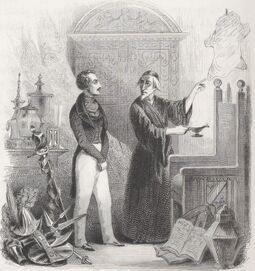The “journey to the Orient” in the literary sense of the term is a 19th-century invention. To measure this metamorphosis, it needs to be compared with the past.
Of course, Europeans did not wait for the so-called century of progress to discover the various regions that made up the Ottoman Empire: in L’Écriture du Levant à la Renaissance. Enquête sur les voyageurs français dans l’Empire de Soliman le Magnifique (Droz, 2000), Frédéric Tinguely analysed the writings of seven authors (Jacques Gassot, Pierre Belon, André Thevet, Guillaume Postel, Pierre Gilles, Nicolas de Nicolay, and Jean Chesneau) showing just how much their books differed from the literature of pilgrimage, as in Bernhard von Breydenbach’s Peregrinatio in Terram Sanctam (1486), even if a rhetoric of commonplaces still marked these relationships, they nevertheless managed to free themselves from some stereotypes and propaganda, so as confront reality.
In the 17th century, the era when Molière made fun of the Great Turk in Le Bourgeois gentilhomme and during which trade relations flourished with the Levant, the Voyage d'Italie, de Dalmatie, de Grèce et du Levant fait aux années 1675 et 1676, by the Lyonnais doctor Jacob Spon and the British traveller George Wheler, is particularly precious when it comes to antiquities and botany. The end of the century was marked by the work of Antoine Galland, initially a librarian and the personal secretary of the Marquis de Nointel, the French ambassador to the Sublime Porte, then mission officer to the new ambassador Gabriel de Guilleragues, before becoming the “king’s antiquary”: fragments of his journal have been kept at the BnF. In 1694 Galland published Les Paroles remarquables, les bons mots et les maximes des Orientaux, traduction de leurs ouvrages en arabe, en persan et en turc. But we above all owe to him a translation/rewriting of the Thousand and One Nights (1704-1711) from which all other western adaptations derive.
In the 18th century, the Orient inspired the illustrious “Grand Tour” of British travellers: Robert Wood and James Dawkins, with The Ruins of Palmyra (1753) and The Ruins of Baalbek (1757) – an inspiration for the ideologist Volney; James Stuart and Nicholas Revett, The Antiquities of Athens and Other Monuments of Greece (1762); Lady Mary Wortley Montagu, The Turkish Embassy Letters (1763); Richard Chandler, Travels in Asia Minor and Greece (1775); James Dallaway, Constantinople Ancient and Modern, with Excursions to the Shores and Islands of the Archipelago and to the Troad (1797). Even if they travelled a little less, the French dreamed of the Orient while reading the Abbé Prévost’s Histoire d’une Grecque moderne (1740), inspired by the story of Charlotte Aïssé, who was taken to Paris by the Comte de Ferriol, the French ambassador to Constantinople.
In 1811, the publication of Chateaubriand’s Itinéraire de Paris à Jérusalem marked a turning point: to quote the words of Philippe Antoine, in his fine essay, Quand le voyage devient promenade (PUPS, 2011), travelling, thanks to a growing romanticism that exalted the individual, affirmed subjectivity and became a pretext for various mental excursions, heightened by the discovery of places seen as being the cradle of civilisation: the Orient, indissociable from the construction of the Occident, also became indissociable from the history of French literature. It was this conception of travel and of the Orient that illustrated the tales of Lamartine, Nerval, Gautier, Flaubert, Gobineau, Loti, Barrès and, subsequently, the novels and poems of Balzac, Victor Hugo and Alexandre Dumas.
La peau de chagrin : études sociales par H. de Balzac. 1838
But it would be reductive to limit “travels to the Orient” to authors recognised as being professional writers and published in literary anthologies. Literary value transcended such categories. So it was that Joseph François Michaud (1767-1839), the royalist historian, member of the Académie Française, and author of the celebrated Histoire des croisades (Paris, Michaud-Pillet-Ponthieu, 1812-1822), marked posterity. In May 1830, with Jean Joseph François Poujoulat (1808-1880), his assistant for the Bibliothèque des Croisades, he undertook a journey to Greece, Constantinople and Jerusalem. Poujoulat returned alone to Paris through Syria, while Michaud went to Egypt. Their “letters” (alternate chapters in epistolary form) appeared in their Correspondance d’Orient (7 vol., Paris, Ducollet, 1833-1835), whose reputation spread far beyond the frontiers of France.
Among so many other examples, it would be a pity to omit the writings of Victor Fontanier (1796-1857), former student at the École Normale and the École des Voyageurs Naturalistes, which was part of the Muséum (set up in 1819 by the minister Decazes), who was sent on a mission to Constantinople in 1821, before crossing Asia Minor until 1833, and then being appointed vice-consul in Basra (in 1838), as well as being a correspondent to the Académie des Inscriptions et Belles-Lettres. His Voyages en Orient, entrepris par ordre du gouvernement français published in 3 volumes (Constantinople, Grèce, événements politiques de 1827 à 1829, Paris, Mongie Aîné, 1829; Turquie d’Asie, Paris, Mongie Aîné, 1829; and Deuxième Voyage en Anatolie, Paris, Dumont, 1834).
In the same spirit of porous frontiers, all the writings of the great scholar Ernest Renan, whose style profoundly influenced Anatole France and Maurice Barrès, deserve to be included in this literary category. The Ruines et paysages d’Égypte (1910) by the Egyptologist Gaston Maspero are in no way inferior to the desert writings of Eugène Fromentin. As for the Vicomte Eugène Melchior de Vogüé, a diplomat and literary enthusiast, and author of Histoires orientales (1880), it was in a novel, Le Maître de la mer (1903), that he delivered his most eloquent evocation of Auguste Mariette’s digs in Saqarra.


